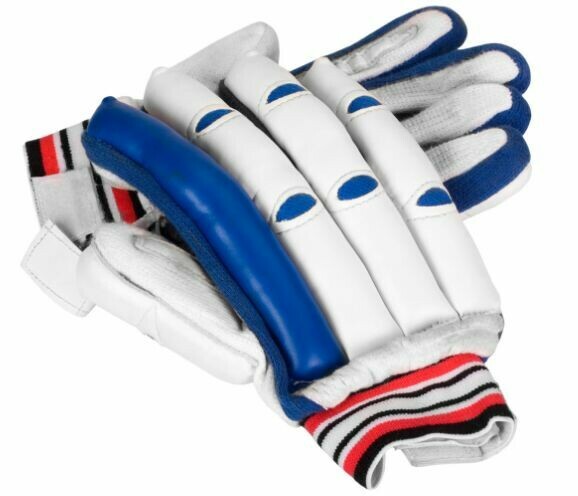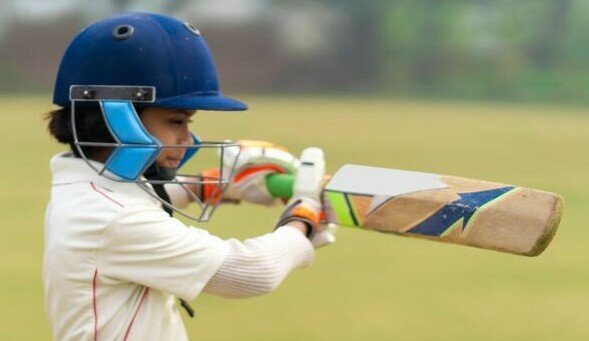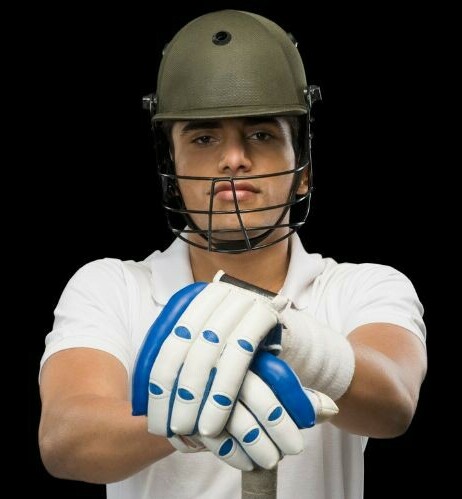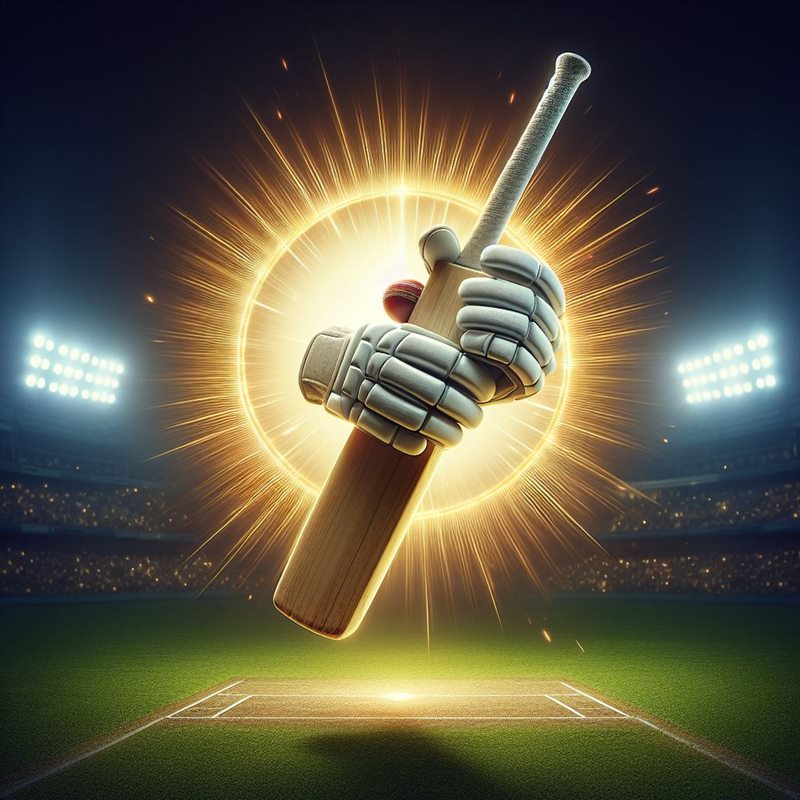Welcome back to this series on the correct sizing of cricket gear. We began with the correct bat size and weight, progressed to the legs for the correct cricket pad sizing, jumped up to the head to look at the correct size for your helmet, and today we are going to the hands, and looking for the correct batting gloves size for children right through to adults.
Your gloves are a crucial part of your protective gear, and they serve more purposes than simply looking professional. The most obvious use for cricket gloves is they protect your hands, but that is not their only use.
Cricket gloves help you hold on to the bat. There are a lot of forces at play when you swing the bat at a ball being hurled at you, and then (hopefully) connect with a satisfying thwuck. And all of those forces are wanting to tear the bat out of your grasp.
The downward swing of the bat when it is so easy to lose control; the ball on bat collision when the vibration from that alone is enough to jar the bat out of your hands; the follow through of the bat stroke; how often have we seen the bat go flying, even if the batter is wearing gloves. How much harder would it be to control the bat without them?

In all of these situations, it is your cricket gloves that allow you to control your stroke and keep your grip on the bat. Without grip control, you have no control of your stroke, and without control of your stroke, you have no idea where the ball is going.
Cricket is a game of precision, control and power, and without cricket gloves, you lack the first two, which makes the third extremely difficult.
And of course, batting gloves are pivotal in preventing injuries. As you grip the bat, it’s the gloves that absorb the shock of the impact, shielding your hands and fingers from as much damage as possible. The constant jarring vibration of each repetitive impact could leave to bruises, fractures, or worse, especially in young cricketers, whose developing hands are more susceptible to injury.
Then there’s the final way that gloves protect your hands, and that’s from direct impact. Without gloves, a direct impact on a hand, finger or thumb has two forces at play. There’s the initial impact itself, and then there’s the squeezing of the struck body part against the bat handle itself which can also cause injuries.
Cricket gloves are designed to protect your hands from injuries from all these different forces that are in play. Obviously, injuries still occur, but even those injuries would be multiplied by a large factor without the protective influence cricket batting gloves give.
Every cricketer needs to understand that well-fitted gloves are an investment in their safety, performance and longevity in the game. Good gloves not only reduces the risk of injury but increases your confidence at the crease, allowing you to focus on your technique rather than focus on your fingers not getting hurt.
Let’s now get to specifics. Let’s talk sizing. From junior cricketers just starting out, to adult cricketers who have seen it all, how can you ensure that you find the perfectly sized cricket gloves to aid you in your cricketing journey?
Navigating the Sizes: Batting Gloves from Junior To Adult

Cricket batting gloves come in various sizes, starting with Extra Small Junior which measure at less than 14.5 centimetres, to Oversize Adult which measure at over 21.5 centimetres. Between those two, you have Small Junior, Junior, Youth, Small Adult and Adult, which each group having a sizing variation of only 1.5 centimetres (Small Adult has a sizing variation of only 1 centimetre i.e. 19cm to 20cm.)
These sizing difference are based on average hand measurements, which we’ll get to soon, and they ensure that players find a size that provides them with the optimal blend of comfort and protection.
Junior sizes are typically designed for players under 12, and as a player matures, the muscles and bones in their hands develop distinctively, and the transition to adult sizes becomes necessary.
Adult gloves are designed, obviously, with a larger hand in mind. There is more substantial padding and wrist support to reflect the greater forces that are in play when adults play.
Knowing the difference in sizes ensures a player can make an informed decision while buying their next pair of batting gloves. Different brands have slight variations in sizing, so knowing your hand length and palm circumference will allow you to attain a more accurate fit.
A very important note to take into consideration at this point, is that there are such things as ‘right handed gloves’ and ‘left-handed gloves’. If you or your aspiring cricketer is left hand dominant when picking up a bat, you need to ensure you or they buy left-handed cricket gloves.
The difference between the two is the protective cap on the end of the thumb. Because of the way a right hander holds the bat, his right thumb is at the front of the bat, and in prime position to take a direct knock to the tip of the thumb. The protective cap helps protect that thumb. For a left-hander, that protective thumb is on the left hand. If, as a left-hander you use right-handed gloves, your left thumb, which will be at the front of the bat will not be well-enough protected should it be hit.
Finding Your Perfect Fit: A Step-by-Step Sizing Guide
The first step to finding the perfectly sized batting glove is to find out how big your hands are. Take a tape measure and measure from the start of your wrist to the tip of the tallest finger. This is the measurement you’ll use to compare the different sized batting gloves to find out which one will likely fit you best.
For young cricketers, the batting glove should be snug, but not tight. This allows for a little bit of growing room without sacrificing immediate control and protection.
For adults, you should try to find a glove that fits well with very little extra room. If you notice that there is an overhang of material in the palm area of the glove, it is too big. Your fingertips shouldn’t touch the tip of the glove; there should be a little room, but not more than 1 centimetre between your finger tips and the tip of the glove.

When buying batting gloves, test them out. If you can’t flex your hand with the glove on, you won’t be able to grip the bat properly. With the glove on, try and replicate some batting shots. If you feel pinching or restriction, consider a different size. Comfort is important, you want freedom of moment, but if the glove is too loose that can be just as bad as a glove that is too tight.
Keep in mind that cricket batting gloves are made of leather, and with the sweat of your hands, leather stretches over time. What today might feel snug, will, after a few more uses, feel far more comfortable. Gloves need some time to be broken in.
Knowing When To Upgrade: Signs It’s Time For Larger Gloves
Regardless of how well you maintain your gear, there will come a time when your current gloves no longer fit the bill. The most obvious indicator that it’s time for new gloves is that the old ones are no longer comfortable. If your gloves are squeezing your fingers, it’s a clear sign to size up. Your batting will suffer if you have limited motion in your hands.
Another sign is visible wear and tear. Look at your gloves really closely. If the padding is worn down or the stitching is coming apart, now is the time to replace them. If your equipment is compromised, it can not protect you as well as it was designed, and compromised gloves could mean the difference between a jarring strike on the finger merely causing a little bit of discomfort or a broken finger.

Regularly inspect your gloves for stiffness or material breakdown. Your gloves needs to be flexible to allow you range of movement to control your bat through the variety of strokes you play each innings. Once you spot these signs, take action and replace your gloves.
Remember, the better your gloves fit, the better you hold on to the bat, and the batter the gloves protect your fingers. It doesn’t take much for a blow on a finger jarred against the bat handle to break the finger, but at least with proper fitting, well maintained cricket gloves, you are better able to protect yourself from that happening.
So, thank you for reading this article. I hope you’ve learnt from our quick and easy cricket gear sizing guide series. If you have any stories of your own cricket gloves and times when they protected your fingers, drop a comment below. We’d love to hear from you.

